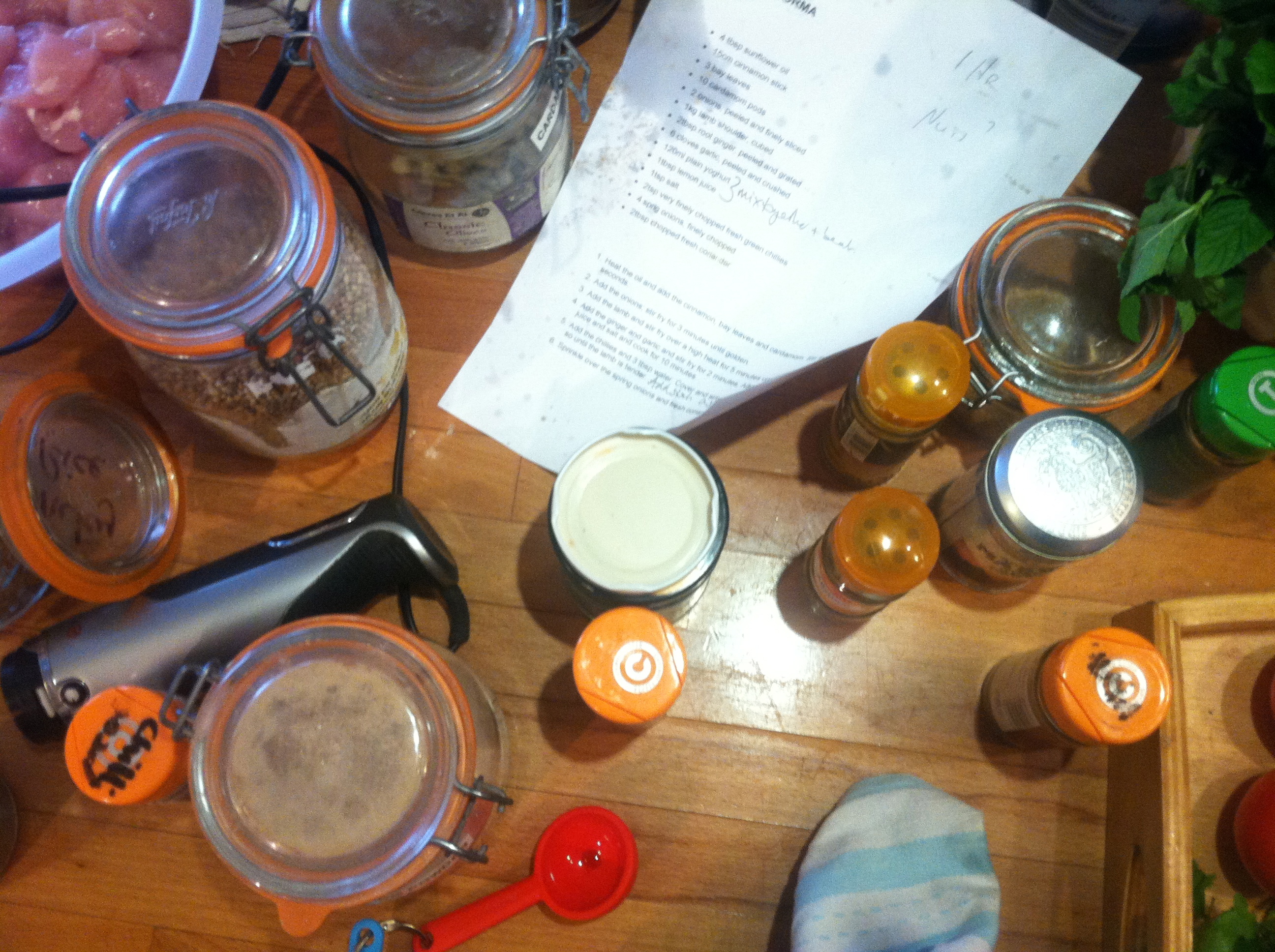Around the World in Eight Plates
[This is one in a series of blog posts written by Charlotte the Intern. Tune in daily to find out about what she’s been up to, what she has been learning about, and all of the crazy things she does as part of the Manna from Devon team.]
So, I made a big mistake. A huge one. You see, we had an amazing course today, where David and Holly taught curries from all over the world. We made a lamb korma and a Burmese vegetable curry, a Thai green chicken curry and some lentil dal. We even made a Jamaican goat curry with venison, as goat is incredibly hard to find here. We chopped and sliced and shredded and simmered away all morning. Then, we sat down for this beautiful meal of curries from all over the world, with such aromas and flavors that made me feel like I had died and gone to spicy heaven. The only thing I didn’t do? I didn’t take a single photo. Well, that’s not entirely true. I did take a single photo. This one:
If the word you are now thinking of is “lackluster”, then we’re on exactly the same page. It’s just so sad that we had this bold, brightly colored meal and I can’t even show you what it looked like.
So I failed as a food blogger today, but in order to make up for it, I’m going to tell you a little bit about curry.
Growing up, I always thought the equation went: curry = Indian food. Then, as I grew older and my taste started to develop, I came upon the miracle that is Thai curry. I soon realized that you can put curry on popcorn, or in chocolate, and it’s absolutely delicious. “You can put curry on everything!” I cried, in an orange-powdered frenzy. But that is actually curry powder, which is a largely Westernized spice mixture of the most common spices used in Indian cooking, specifically.
Of course, when it comes to curry as a dish, its interpretations are equally widespread, but a bit more discerning. “Curry” really denotes a more general category of dishes that originate from places as far apart as Southeast Asia and the Caribbean islands, as the dissemination of this style of cooking was largely tied to the spice and sugar trades of the 16th-19th centuries. And curries come in countless variety. They can be wet or dry, meaty or vegetarian, creamy or spicy or both at the same time.
In general, A good curry is an exercise in measured balance (this is where the discerning part comes in). Salty with sweet, spice with freshness. Usually they appear complicated and intimidating to the uninitiated chef, with ingredients lists that seemingly go on for miles, but most curries are actually quite quick and easy to prepare. A little chop, whiz in the blender, boil and simmer will go a long way, giving you a basic curry with minimal effort. Of course, some take longer, requiring hours of simmering on the stove to meld the flavors or fully tenderize the meat, but in general, making a curry is an easy way to have a proper meal that is absolutely loaded with flavor.
According to the always-reliable Wikipedia, curries also have a number of health benefits, not the least of which is that, “with the complex sensory reaction to the variety of spices and flavours, a natural high is achieved that causes subsequent cravings, often followed by a desire to move on to hotter curries. Some refer to this as addiction.”
Apparently.
Either way, curries are delicious and deceptively easy to make. I should thank Holly and David for opening my eyes to that fact, and for making an absolutely delicious lunchtime feast. And I should also thank Wikipedia for giving me a ready excuse for not having taken pictures: I was just having too much fun on my natural curry high to even think about picking up my camera.


